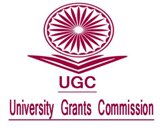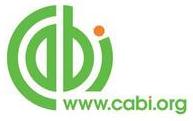Marketing Strategies Evolved by Entrepreneurs in Marketing the Coffee Products
Abstract
Results of conjoint analysis showed quality attributes preferred by the entrepreneurs. They were Arabica and Robusta (50:50) mixed variety, mixing of 70:30 coffee, chicory ratio, keeping quality up to 6 months, medium level of taste/aroma, filter size of the powder and roasting time of 15 minutes/ 10 kg of seeds. About 83.00 per cent of entrepreneurs produced coffee powder as a final form of coffee product, nearly two-third (63.00 %) of the entrepreneurs did not have any brand name or logo, cent per cent of them reported manual packing only. Major criteria to fix different price rate of coffee product were International daily market price (90.00 %), factors affecting the price policy were market price fluctuation (93.33 %), season (90.00 %) and Cent per cent of them had adopted coffee price forecasting broadcasted by various media. Selection of the location depends on nearby town and coffee potential area, techniques to overcome the competitor were better pricing and supply of quality coffee product, attraction of customers depends on personal contact, attractive display boards, quality, taste, aroma and flavor. Promotional activities carried out by the entrepreneurs were developing the customer base (83.33 %) and working towards building customer loyalty (76.67%). Relationships followed among stakeholders were good partnership, price and profit sharing, commission basis, service and quality, supply-service and demand. Further, market demand reported by entrepreneurs were: the demand for coffee beans peaked during July to November, coffee powder were more demand in three seasons namely rainy season (June-September), winter season (December- January) and summer holidays (April-May). Feedback mechanism reported by coffee entrepreneurs were: quality analysis report received from the export organization, physical analysis, cup test, personal contact through phone, e-mail and also personal letters.References
Anonymous, 1996. Coffee Guide, Central Coffee Research Institute, Chikmagalur District, Karnataka.
Anonymous, 2011, Data Base on coffee, Coffee Board, Government of India, Bangalore. Available at: www.indiacoffee.org.
Anonymous, 2010, 70th Annual Report, Coffee Board, Government of India, Bangalore.
Arulanandu, U, 2007. An Econometric Analysis of International and Domestic Trade of Spices. Unpub. Ph.D Thesis, AC & RI, Madurai, TNAU.
Dannof, C.H., 1949. Observations at Entrepreneurship in Agriculture Change and the Entrepreneur. Harvard University Press, Cambridge, pp. 13-18.
Moore, W.L., 1980. Levels of Aggregation in Conjoint Analysis: An Empirical Comparison, Journal of Marketing Research, 17: 516-523.
Downloads
Published
How to Cite
Issue
Section
License
Authors who publish with JEE agree to the following terms:
- Authors retain copyright and grant JEE right of first publication with the work simultaneously licensed under a Creative Commons Attribution License that allows others to share the work with an acknowledgement of the work's authorship and initial publication in this journal.
- Authors are able to enter into separate, additional contractual arrangements for the non-exclusive distribution of the journal's published version of the work (e.g., post it to an institutional repository or publish it in a book), with an acknowledgement of its initial publication in this journal.
- Authors are permitted and encouraged to post their work online (e.g., in institutional repositories or on their website) prior to and during the submission process, as it can lead to productive exchanges, as well as earlier and greater citation of published work (See The Effect of Open Access).
Extension Education Society
https://creativecommons.org/licenses/by-nc-sa/4.0/
This work is licensed under a Creative Commons Attribution-NonCommercial-ShareAlike 4.0 International License.









.png)

